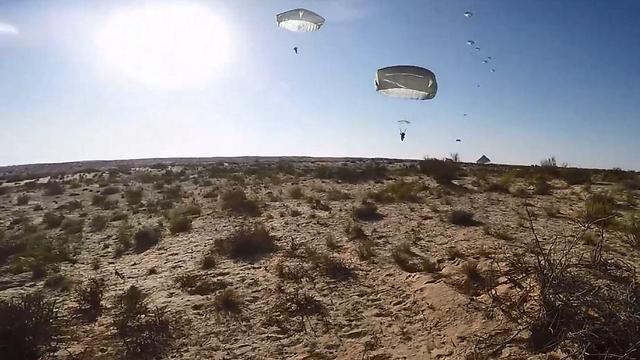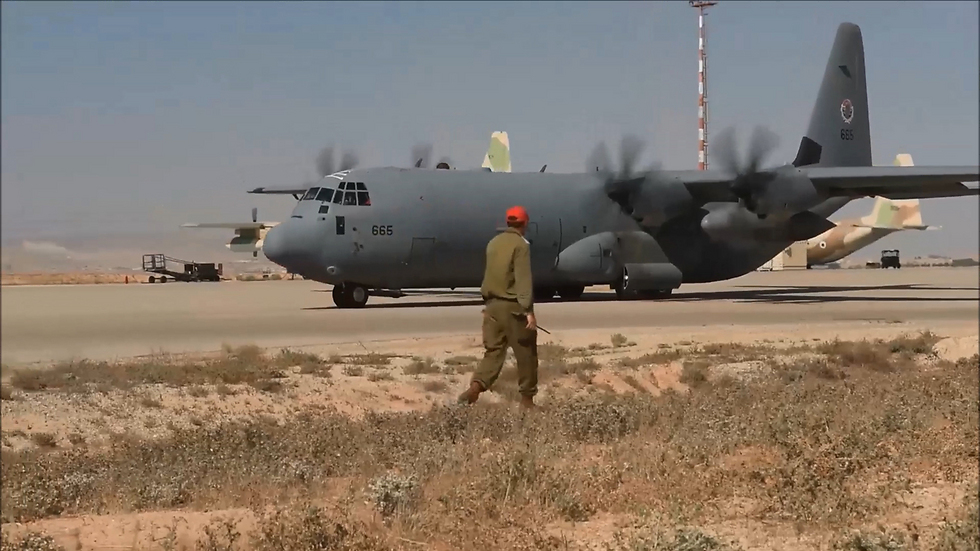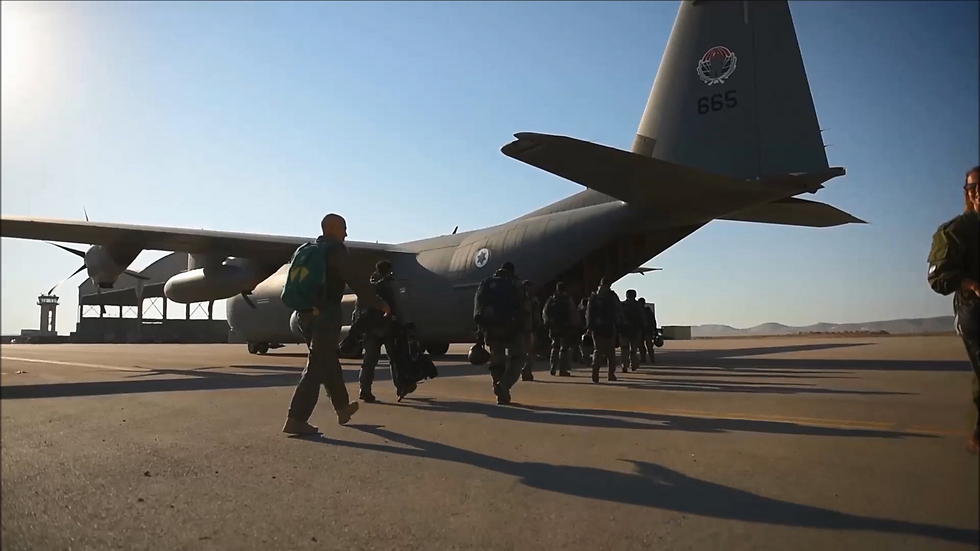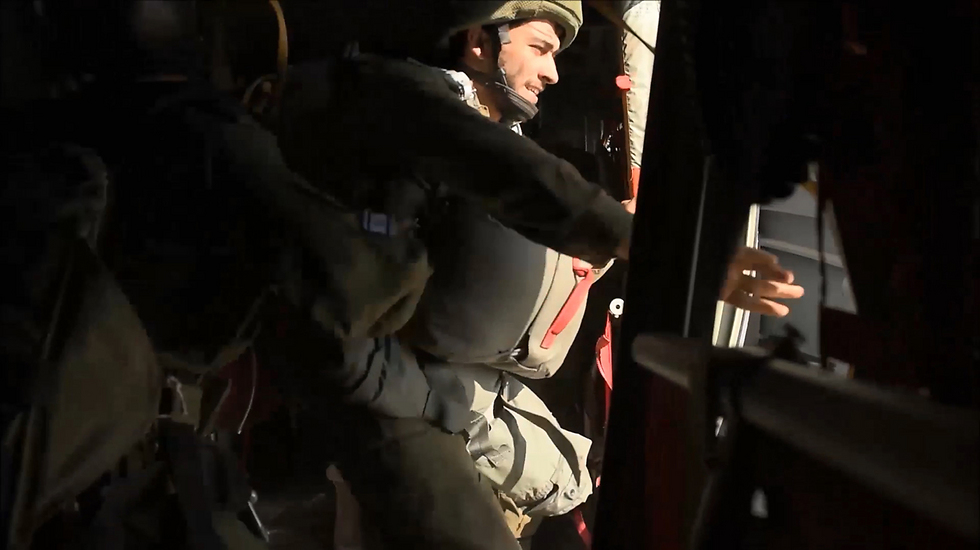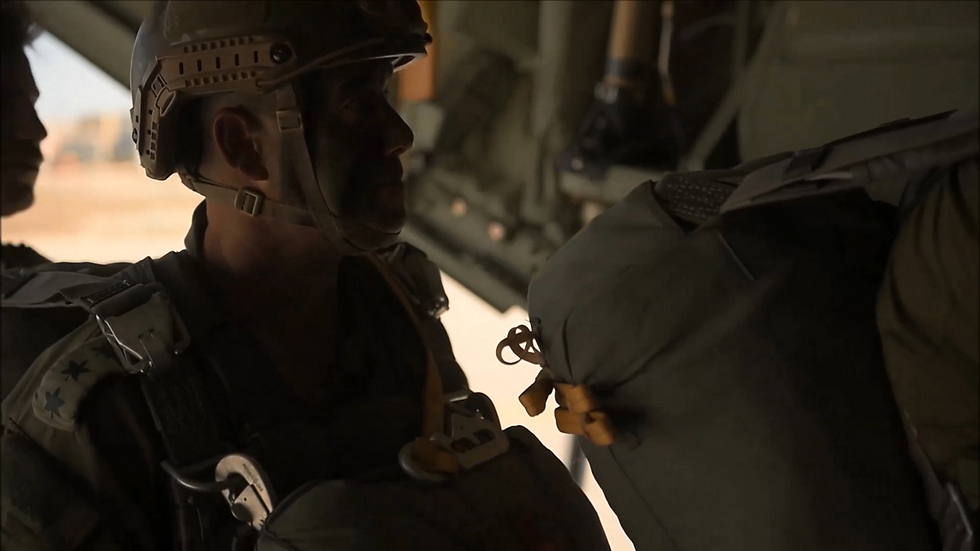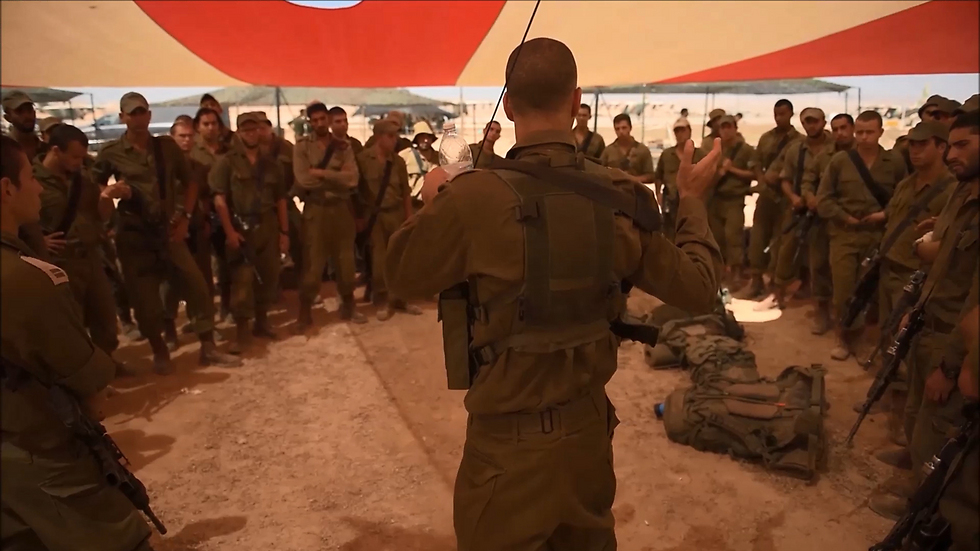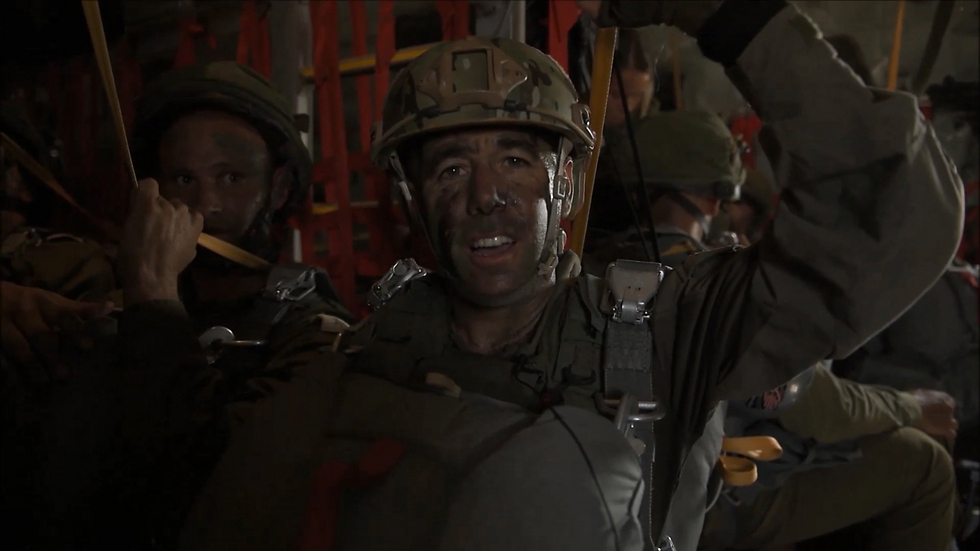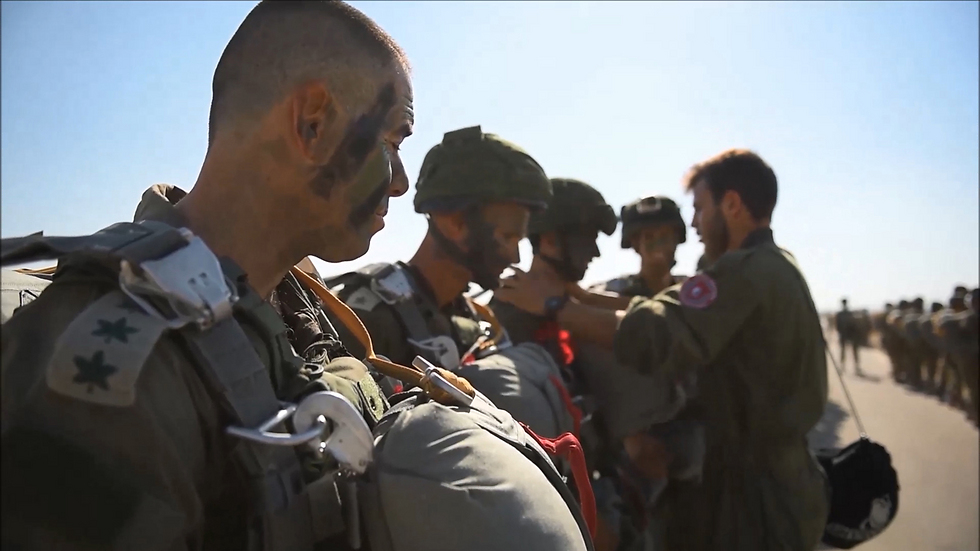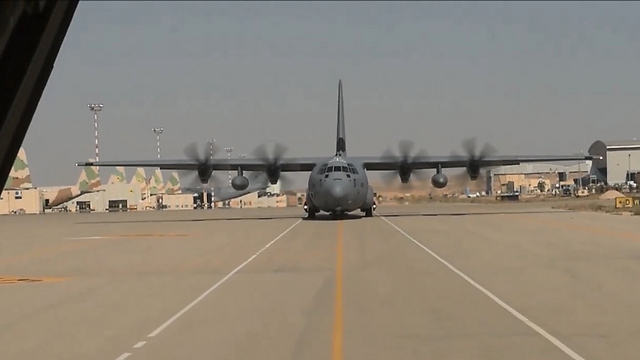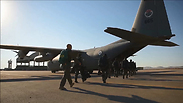
WATCH: Paratroopers drill landing in 'enemy territory'
The Paratroopers Brigade holds a large-scale exercise drilling parachuting into 'enemy territory' and landing Hercules planes transporting troops and equipment on temporary landing strips. The soldiers drilled raiding targets simulating enemy command centers and rocket depots, with the ultimate goal of being ready for any scenario.
Officers at the Israeli Air Force said this was the first time planes carrying such a large number of soldiers and combat gear land directly onto temporary landing strips. While the task is a complex one, is it one the IDF's cargo aircraft are capable of.
A total of 16 landings were done within just a few hours on the special landing strips, which were prepared in the Ramat Hovav area in the Negev. These stretches of land were flattened and transformed in a short time by an aircraft landscape and desert specialist unit to simulate enemy territory far from Israeli borders.
The hundreds of soldiers from the Paratroopers Brigade's 890th Battalion and reconnaissance battalion, who parachuted into "enemy territory," covertly secured the temporary landing strip to foil any attempts of attack against the Hercules planes.
The cargo aircraft transported 16 combat vehicles along with ATVs used to carry equipment for the ground forces.
In addition, the planes unloaded advanced communication equipment to maintain direct and continuous radio contact between the troops on the ground and the command center in Israel, hundreds of kitbags with the soldiers' equipment, boxes of ammunition, water containers, and medical equipment for a field hospital.
On the planes were also 60 soldiers from Special Forces units, including the canine unit Oketz and the engineering unit Yahalom.
"Hezbollah's fighters have the capability to attack Hercules planes, and that is why our ground forces instructed the planes to land during a very specific window of time," a senior Paratroopers officer explained to Ynet.
"Deputy IDF chief Maj. Gen. Yair Golan set a very clear directive: Renew and strengthen the IDF's parachuting capability, with an emphasis on the Paratroopers Brigade, which is why there are no more parachuting courses given as a 'treat' to other units," he added.
The troops parachuted using the new US-made "Gur" parachute, which replaces the old "Tzabar" parachute. According to officers in the Paratroopers Brigade, the new parachute, which is also being used by the US military, has reduced the number of injuries among American paratroopers by 75 percent.
'A lot safer than helicopters'
The paratroopers parachuted from 1,200 feet even though in real time, based on the level of danger on the ground and the wind speed, they can jump from as high as 6,000 feet.
"Parachuting from planes is a lot safer than using helicopters, (particularly since) during war time (the helicopters) will be used more for extraction and evacuation anyway," explained Paratroopers Brigade commander Col. Nimrod Aloni.
After touching down, the paratroopers headed to the brigade's "gathering point" and then left on a "raid" of eight targets in a built-up area, which were simulating enemy command centers and a weapons depot storing long-range rockets.
Later, the paratroopers were flown to the Mahanayim landing strip in northern Israel to continue the exercise and "capture the Hermon Mountain."
The training had different scenarios, and included cooperation with the Air Force and the Navy.
During the exercise, the paratroopers drilled other tasks in addition to parachuting, such as locating water sources (wells or streams) and chlorinating the water to make them fit for drinking.
According to Col. Aloni, "We want to come to the General Staff and say we are ready and prepared (for any scenario)."
According to Maj. S., the deputy commander of the Shimshon Squadron who also piloted the Hercules plane the Paratroopers Brigade commander jumped out of, "the exercise includes assignments that we normally don't do in our day-to-day activity, but we met all of the deadlines set for us."
"We can land on any kind of terrain, but we're limited in weight and loads, which is why we have experts working on this," Maj. S. explained. "They come in advance to examine the ground and find any obstacles, and then mark the landing strips for us for day or night landing. We're used to landing on asphalt runways rather than dirt landing strips with dust and vegetation, so this was a special thing."
He went on to note that "by the end of the year, we will receive new Shimshon (Super Hercules) planes and have a total of nine planes."











